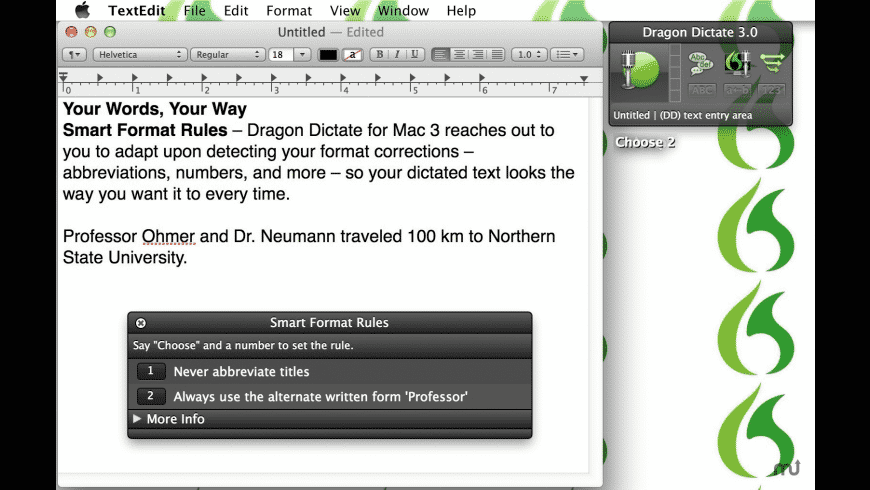

In the end, Mavericks’s built-in Dictation tool made 28 mistakes.ĭragon Dictate had fewer problems but still made some mistakes of its own. For instance, when I said “detail,” it transcribed “D tell.” When I said “expository,” it heard “Expo is a Tory.” The program had particular problems with the sentence “Students must be jarred out of this approach.” I spent several minutes trying to get Dictation to transcribe “jarred” and “jar” correctly each time it transcribed them both as “John.” I also found it odd that Dictation refused to insert a space before opening quotation marks it failed to do so in every instance of my test.

Mavericks Dictation’s errors were more frequent and more ridiculous, however. The results? Both programs made mistakes. The results from Mavericks’s built-in Dictation tool.
#DRAGON MEDICAL FOR MAC SIERRA PDF#
I find myself using it throughout the operating system and in places that I’d never thought of using dictation before, including online forms and annotations to PDF files. With my Retina MacBook Pro, the two microphones are so good that I can even dictate without first donning a headset microphone (a traditional requirement for dictation). In fact, it’s how I’m adding this very text. The feature works anywhere on the Mac that you can enter text, no training or customization necessary. Now, when you press the Fn key twice and start speaking, the words appear on screen as you speak. Having this transcription-support file on your Mac dramatically improves the functionality of OS X’s built-in Dictation feature. To set it up, you go to the Dictation & Speech pane in System Preferences and tick the Use Enhanced Dictation box. In OS X Mavericks, you now have the option of downloading a file that supports offline dictation. If something went wrong, you had no idea until you were (a) done speaking and (b) OS X had finished transcribing what you said.


 0 kommentar(er)
0 kommentar(er)
